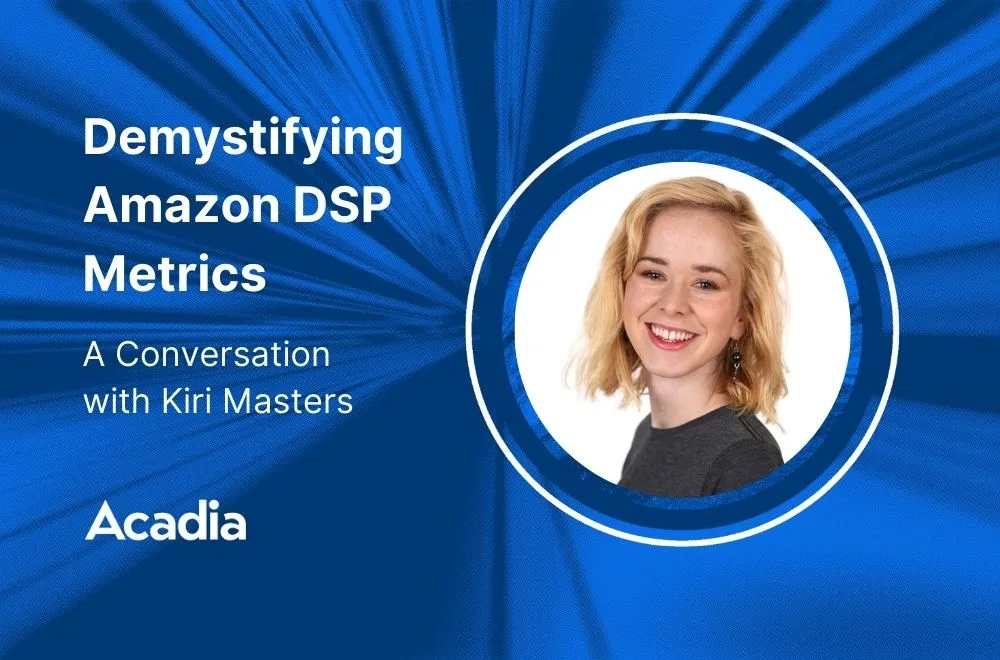In this edition of Profitability Unleashed, we speak with Kiri Masters, Head of Retail Marketplace Strategy at Acadia, about how they are demystifying Amazon DSP metrics for their clients.
Fresh off her latest research that detailed the next-gen metrics that matter, Kiri offered insights on how they are helping clients understand the full story behind their metrics, why brands focus on the wrong things, and how custom metrics can make the difference in understanding success with Amazon DSP campaigns.
Why Brands Focus on the Wrong Metrics in Amazon DSP?
Kiri points out that brands often use metrics like impressions and ROAS because they are comparable across other programmatic advertising environments, like the Trade Desk. However, understanding what goes into these calculations is crucial, as side-by-side comparisons may not be everything they seem. Kiri recommends that brands focus on metrics that are meaningful for their audience targeting tactics and objectives.
Custom Metrics for Amazon DSP
Kiri suggests using custom metrics to gain a better understanding of Amazon DSP success. For instance, competitor audience acquisition measures how many unique users from competitors’ audiences a brand has managed to reach in a given month. This metric is powerful for showing the success of the current stage and whether the brand is effectively showing ads to its competitors’ customers.
Skepticism Around Amazon DSP
Kiri shares that Acadia has had a seat on Amazon DSP since 2017 and has seen widespread adoption among its clients. When they conducted tests to determine the incremental sales opportunity with DSP, they found a positive correlation. Kiri cites an example of an off-on-off test with a pet category client, where ramping up DSP led to a 15% sales lift on Amazon during that time that couldn’t be attributed anywhere else.
Success of AMC + DSP Together
Kiri explains that combining Amazon Marketing Cloud (AMC) and DSP allows them to bring PPC and DSP together along with Amazon’s first-party sales data, resulting in effective tracking of incremental growth. They’ve also seen strong correlations between ROAS and purchase rates for customers who’ve been served multiple types of ads.
Unlock the Full Story of Your Metrics
Kiri emphasized the importance of understanding Amazon DSP metrics to achieve success on the platform. To do this, brands should focus on customized metrics that are tailored to their specific audience, targeting tactics, and objectives. Combining AMC and DSP can also maximize the effectiveness of their campaigns.
To discover more tips on how to drive results on Amazon, make sure to follow Acadia and connect with Pacvue to learn more.













